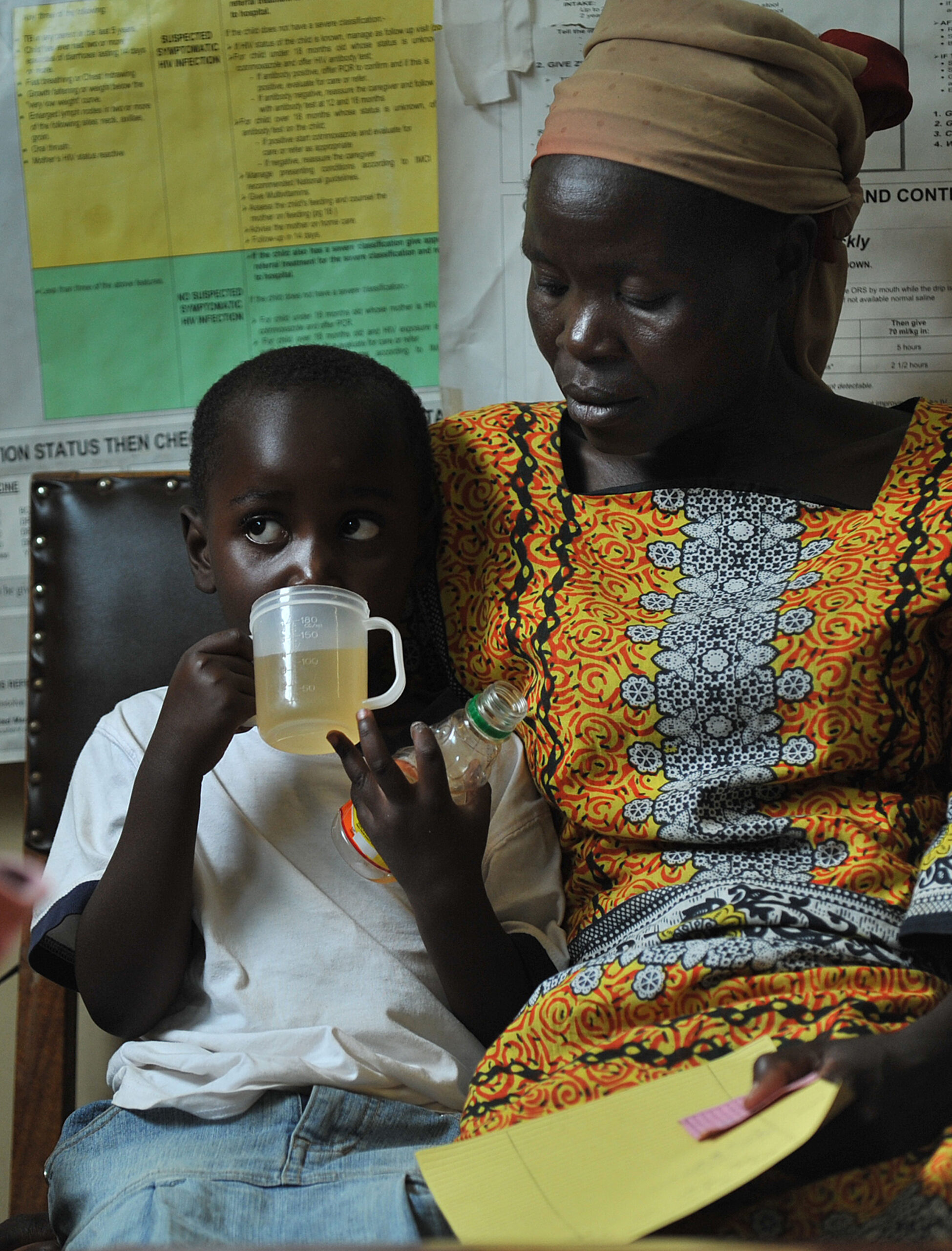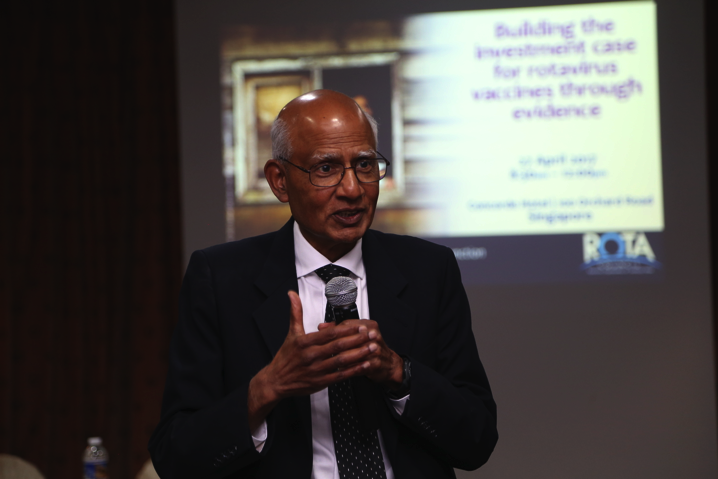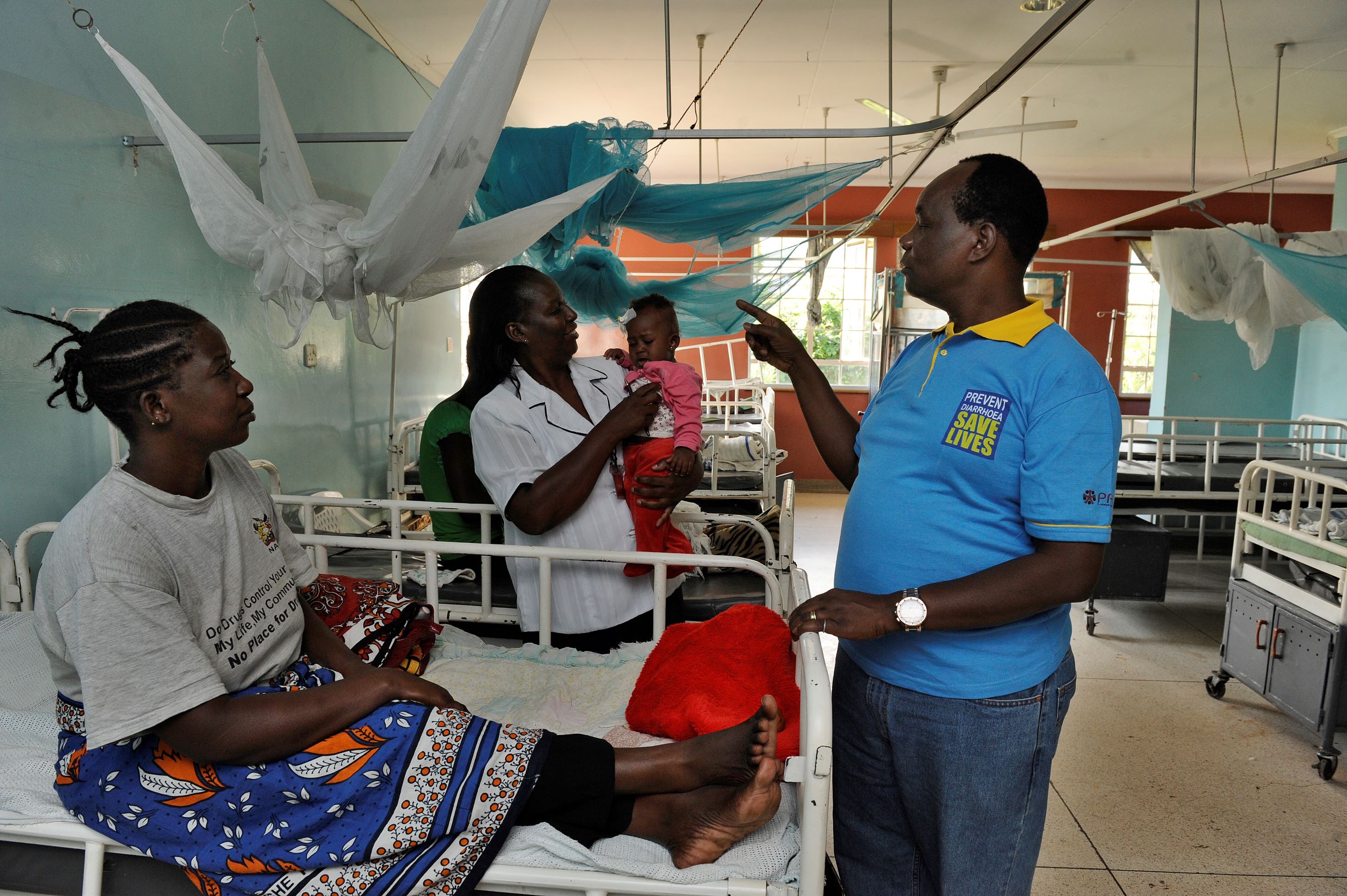
ORS and zinc: evidence-based miracles that defeat diarrheal disease

Photo: PATH/Tony Karumba.
As pediatricians, the currency of our trade is data, not miracles. But lifesaving oral rehydration solution (ORS) blurs these lines.
Miraculous: there’s no other way to describe what it’s like to see a sunken-eyed child, on the verge of death, bloom back to life right before your eyes. It unfolds the same way in Kenya, India, and the world over. And it’s no less miraculous today than when we witnessed it in our patients at the beginning of our careers decades ago.
Preventable diarrhea deaths have driven us to great lengths to study, deliver, and teach others about the powerful tools in our
 Dr. Mathu Santosham speaking at the Asian Vaccine Conference.arsenal. We’ve shouted about it from toilet stalls and proudly worn the moniker Dr. Diarrhea on behalf of the cause, because we know the stakes all too well.
Dr. Mathu Santosham speaking at the Asian Vaccine Conference.arsenal. We’ve shouted about it from toilet stalls and proudly worn the moniker Dr. Diarrhea on behalf of the cause, because we know the stakes all too well.
Our practice became our passion. We’ve become spokespeople and advocates. We are eager for people to see and understand what we’ve seen and understand.
In medicine, the threads of time are at their most delicate. Chances to save a life can vanish by the hour, the minute, and a case of severe diarrhea is no exception.
Diarrhea’s perceived normalcy among parents only makes the danger more insidious. Unknowingly, many wait until their child’s condition is critical. Common myths about withholding fluids puts them into an even worse state. The downward spiral toward deadly dehydration in children is dizzying, especially if they are already malnourished.
Low awareness of, and low access to, information and tools are the obstacles you’ll find everywhere there is poverty, from India to Kenya. We try not to dwell on the memories from early in our careers: crowded diarrhea wards filled with grief-stricken parents and children too far gone to save. These numbers were in the millions when we began our careers in medicine.
Such preventable tragedy would overwhelm the heart were it not for the marvel of watching a child recover, even after being moments away from death. It happens simply and unremarkably: small sips, a few hours of rest and rehydration on a mother’s lap. With a mixture of sugar, water, and salt, we’ve watched children grow bright-eyed and playful. Our own eyes grow bright with the knowledge that we have helped reclaimed a lifetime. These moments are some of the most satisfying of our careers and continue to sustain us.
Together, ORS and zinc prevent the majority of deaths caused by diarrhea. As more vulnerable children gain access, moments of marvel are increasingly eclipsing moments of despair.
 Alfred Ochola makes the rounds in one of Kenya’s pediatric wards. Photo: PATH/Tony Karumba.
Alfred Ochola makes the rounds in one of Kenya’s pediatric wards. Photo: PATH/Tony Karumba.
In 2004, WHO formalized the ORS + zinc protocol as the gold standard diarrhea treatment. But only about a third of vulnerable children get ORS, and only 7% get the complete treatment package of both medicines.
Another landmark WHO decision earlier this month will help change that: co-packaged ORS and zinc is now on WHO’s Model List of Essential Medicines (EML), including the list for children’s medicines (EMLc), a signal to countries to the same in their national EMLs.
For health systems, an EML listing means budget and procurement prioritization of the co-pack. For families, it means a more affordable option than purchasing each medicine on its own, and a way to reinforce that a diarrhea treatment is incomplete without both medicines. For children, this means fewer lives cut short from a preventable disease. Kenya’s children have already benefitted from the introduction of the co-pack in its national EML. The opportunity for impact in India, previewed by Save the Children’s Stop Diarrhoea Initiative, is monumental.
For us, it’s a celebration and a call to action. We won’t rest until no child dies from diarrhea. Will you join us?


